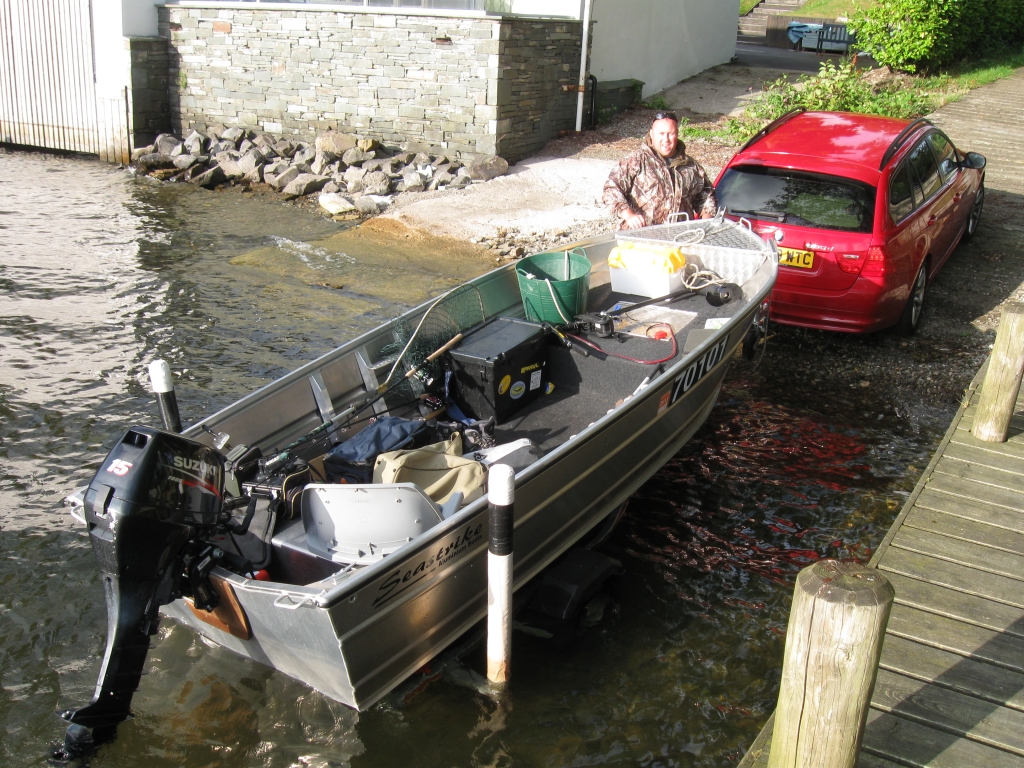Boat Launching
Surprisingly, one of the most common questions I get asked through this site, regarding boat fishing, isn’t about boat specs or what gear is best, but how do I go about launching or recovering my boat in the easiest way.
Well, most anglers that have had their boats for a while will know all the little tweeks and tricks to make it an easy procedure, for the newbies however it can be a very stressful procedure, especially if you are on a busy slipway with lots of other boat owners watching- to add to the stress level!
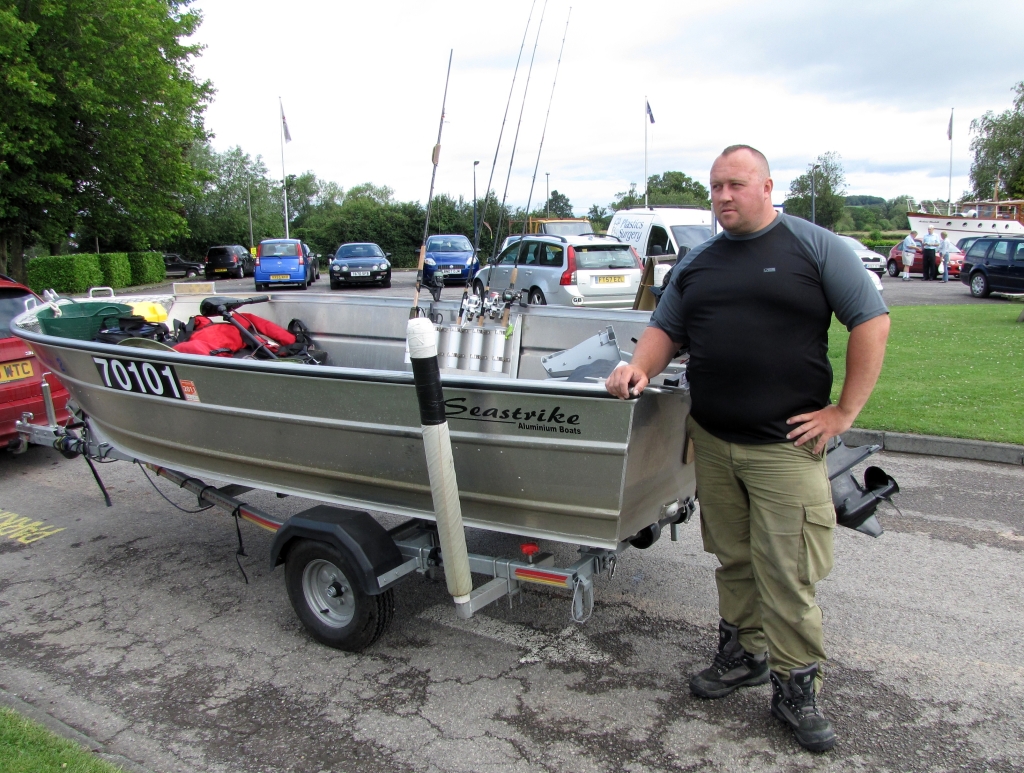
Firstly, and this is a bugbear of mine, don’t annoy everyone by setting your boat up on the slipway- get all your straps off, and gear loaded into the boat before you even reverse down. It’s just not on to block a slipway up when other people are waiting to use it, and it will not win you any friends if you do. Though I will say its not just anglers that do this, some of the worst are the Emergency Services who should know better, God help anyone that’s drowning if it takes them ½ hour to launch each boat!
Anyway, once you’re all loaded up and un-strapped, make sure the slipway is clear and slowly reverse down to the water. If you can’t reverse a trailer then you need to practice this before even getting to the slip- everyone has wobbly days (with me it’s usually wobbly nights!) But you should be proficient enough to get your boat to the water.
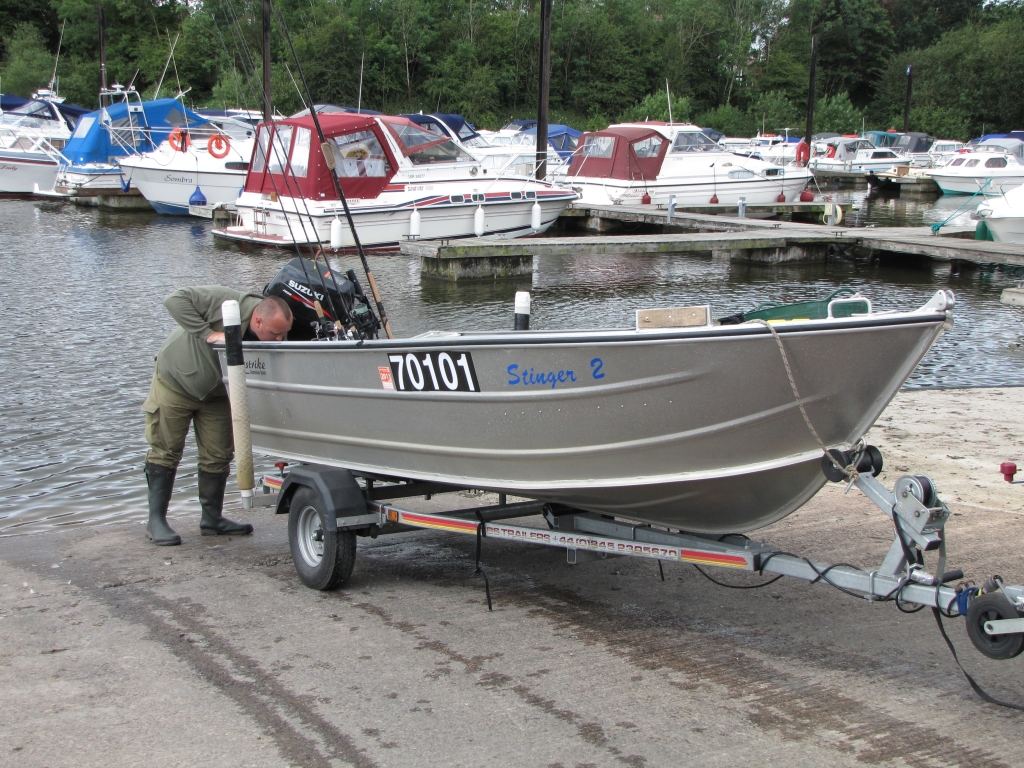
Before putting the trailer in the water, park up and re-check everything is ok with the boat, are all the straps off, have you got your painter attached? (The painter is a length of rope at the front of the boat, used to steer it during the launching process)
The most important thing is to check that the bung is in place, so the boat won’t sink before you have even got in it.!
Once you’re happy, slowly reverse your trailer into the water, now HERE IS THE IMPORTANT BIT, don’t go too far in, as a rule of thumb I go in just until the bunks on the trailer are wet at the rear end. If you go in too far it just makes it difficult- Yes the boat will be floating, but you will need waders to push it from the trailer, my way, I can manage with just wellies. Also, as the boat isn’t floating, it’s still stable on the trailer so you can now easily un-clip the winch, and it won’t be affected by cross- currents or strong winds. (Note- on my trailer I have some docking poles that prevent this anyway).

Now it’s just a case of pushing your boat off the trailer- with aluminium boats this is easy peasy, even with a ton of gear in the boat. Heaver glass- fibre boats can be harder to push off, but you can get roller kits for bunked trailers that will help.
For really big boats, you may have to drive the boat off the trailer, but this is a bit more specialised, and not really applicable to most small boat users.
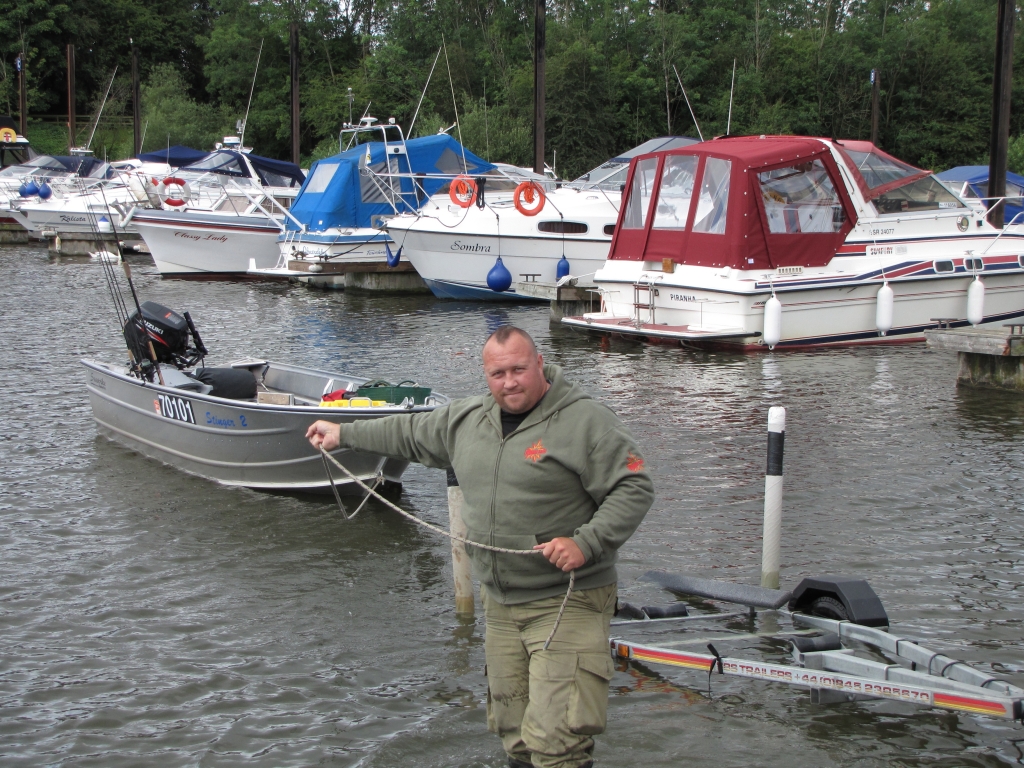
Once the boat is pushed off the trailer, remember to keep hold of the painter, and also be aware that, depending on the angle of the slipway, the boat can come off at some speed -so it’s a good trick to tie the painter to the trailer if you don’t think you can hold on to the momentum of a large boat launched like this.
Now your boat is launched, it’s a simple matter of tying it up somewhere, while you go and park your vehicle and trailer, and away you go!
Obviously it’s a lot easier with two people, but even modest- sized boats can be launched quite easily once you have a bit of practice.
Recovery:
Is often stated as launching, but in reverse, which is basically correct, there are a few tips that will help though.
Firstly, make sure your engine is tilted up, and secondly, very importantly, don’t put your trailer too far in the water, and this is the number one tip for safe easy recovery of your boat. It is tempting to fully submerge the trailer, and I still see quite a few people doing this, as it appears to make getting the boat on easier, but in reality, it makes the boat go on the trailer wonky more times then not, requiring re-launching or a lot of pulling and pushing when out of the water to get it level.
What you need is just the first keel roller under the water, from here just lightly pull (with the painter) the boat up and over the keel roller until it sits on it.
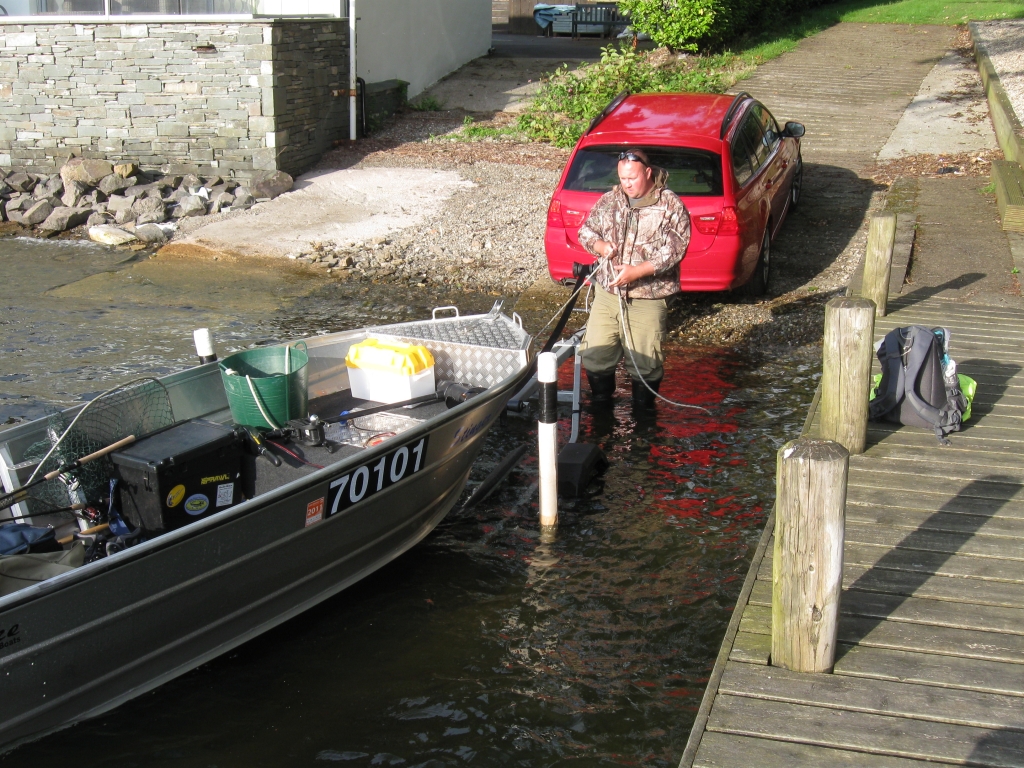
Once the boat is at this point, don’t pull it any further with the painter, or be tempted to pull the boat up by any handles, from here, to get it dead straight on the trailer, simply clip on the winch cable and winch! That’s what it’s on the trailer for!

As the winch is centre mounted, you can be sure that the boat is pulled directly at the centreline of the trailer, and so it will be correctly seated for the majority of time, occasionally misalignment can occur, this is usually caused by a cross wind or a cross current while winching on the boat, but this is mostly eliminated if you can keep the majority of the trailer out of the water. Docking poles fixed on the side of your trailer will also help with this, and I recommend having them fitted if you launch on tidal waters.

Make sure, when you are winching the boat on, that the strap stays straight and lies correctly on the winch wheel. Then winch the boat right up to the bow roller on the trailer, lock the winch off, and tie the painter to the trailer.
Now you are ready to move off the slipway, always make a second check that the engine is tilted up, so you don’t ground it on the way up, and again don’t clog up the slip by unloading and strapping up on it, drive off and let others use it.
Remember to drive off slowly and carefully, as the boat is only held on by the winch and painter, but this is sufficient just to pull it up the slip to a place where you can strap it down correctly.



